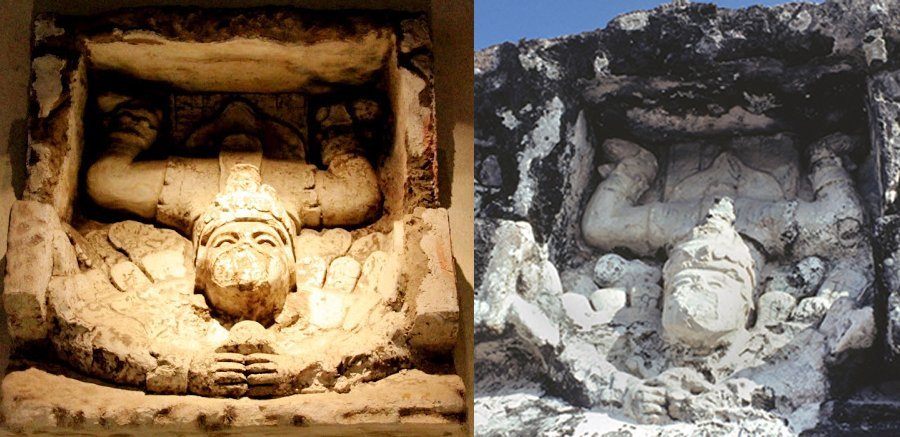Ancient Maya Ruins Of Tulum: Sea Port And Sacred Site For Worshiping Of Descending God
A. Sutherland - AncientPages.com - The ancient Maya site Tulum is the Yucatan Mayan word for ‘fence, trench or wall’ but it also has another name ‘Zama’, meaning ‘City of Dawn’, because it faces the sunrise.
Diving or Descending God is depicted with the head in front, hanging arms and legs bent upwards in a lowered position as if down from heaven. National Museum of Anthropology in Mexico City.
Ancient ruins of Tulum demonstrate the strong influence of Chichen Itza, one of the largest Maya cities referred to in later Mesoamerican literature. The fall of this massive city-state in the 13th century, only 120 kilometers away, coincides with the rise of Tulum. In many respects, Chichen Itza’s aesthetic, inspired by Toltec example, is carried on at Tulum.
Early classic stela inscribed with the date - 564 AD – it is the earliest archeological evidence of human occupation in the area. In the 13th century AD, Tulum was a flourishing trading seaport with access to both land and sea trade routes; the city had a crucial strategic location.
 The murals at Tulum also show ocean-going canoes departing and arriving to Tulum, a prominent port city.
The murals at Tulum also show ocean-going canoes departing and arriving to Tulum, a prominent port city.
Obsidian trade was developed with central Mexico, jade came from Guatemala, copper from Honduras, and from Tabasco arrived cacao beans.
These goods were later transshipped in other canoes sailing south and north.
Tulum reached its height in the 13th to 15th century and was inhabited by about 1,000 to 1,600 people.
The walled seaport with beautifully painted temples of red white and blue, was spotted by a Spanish expedition on May 7, 1518
An enclosure wall and watchtowers in the northwest and southwest corners, allowed the Tulum fort to be defended against invasions.
Tulum - likely constructed, mainly for defensive purposes - was also a sacred site with unique architectural elements, such as small-sized temples with flat roofs.
Many depictions in the Maya murals and other Mayan artwork discovered around the site, confirm that Tulum was an important center for the worship of the Diving or Descending God, a deity depicted in the Temple of the Frescoes and in the Temple of the Diving God located in the central area of Tulum.
The same god - similar to Ah Mucen Cab, a bee god, is also depicted at Tulum's most impressive structure, the so-called (The Castle), which was originally painted red and covered with stucco. El Castillo has three niches and in the central niche above the doorway, there is a sculpture of the descending god.
This god was the main deity at Tulum, the diving god is likely associated with the planet Venus, and accordingly, Quetzalcoatl, the Feathered Serpent.
The Temple of the Frescoes was used as an observatory for tracking the movements of the sun. Niched figurines of the Maya “diving god” or Venus deity decorate the facade of the temple.
Above the entrance in the western wall, a stucco figure of the “diving god” is still preserved, giving the temple its name.
The ancient Maya were skilled astronomers who watched the movements of the stars and planets. The sun and the moon were not the only celestial bodies of importance to the ancient Maya. The movements of the planet Venus had special meaning for these ancient people. Tables that mark Venus’ position throughout the year are recorded in codices, ancient Maya books, and on monuments throughout the Maya kingdoms as well.
By the end of the 16th century, the site was abandoned completely.
Written by – A. Sutherland - AncientPages.com Senior Staff Writer
Copyright © AncientPages.com All rights reserved. This material may not be published, broadcast, rewritten or redistributed in whole or part without the express written permission of AncientPages.com
Expand for referencesReferences:
J. E. Thompson, Maya History and Religion
More From Ancient Pages
-
 First AI-Based Method For Dating Archaeological Remains Developed By Researchers
Archaeology | Aug 23, 2022
First AI-Based Method For Dating Archaeological Remains Developed By Researchers
Archaeology | Aug 23, 2022 -
 500 Million Year-Old Fossils Solve A Centuries-Old Evolutionary Riddle
Archaeology | Nov 7, 2022
500 Million Year-Old Fossils Solve A Centuries-Old Evolutionary Riddle
Archaeology | Nov 7, 2022 -
 Unique Find: Sacred Gate Found At The Minoan Palace Of Archanes In Crete
Archaeology | Nov 1, 2024
Unique Find: Sacred Gate Found At The Minoan Palace Of Archanes In Crete
Archaeology | Nov 1, 2024 -
 Does A Baffling Artifact Offer Evidence Of Ancient Extraterrestrial Visitation In New Zealand? – The Discovery – Part 1
Ancient Mysteries | Jul 20, 2020
Does A Baffling Artifact Offer Evidence Of Ancient Extraterrestrial Visitation In New Zealand? – The Discovery – Part 1
Ancient Mysteries | Jul 20, 2020 -
 Artifacts Discovered In Ancient Florida Sinkhole Can Re-Write History Of North America
Archaeology | May 14, 2016
Artifacts Discovered In Ancient Florida Sinkhole Can Re-Write History Of North America
Archaeology | May 14, 2016 -
 Ancient DNA Reveals A Diverse Community Lived At Machu Picchu, The ‘Lost City Of The Incas’
Archaeology | Jul 26, 2023
Ancient DNA Reveals A Diverse Community Lived At Machu Picchu, The ‘Lost City Of The Incas’
Archaeology | Jul 26, 2023 -
 Creepy And Unusual Ancient Skull Found In Small Crypt Investigated By Scientists But Can They Solve The Mystery?
Ancient Mysteries | Feb 2, 2025
Creepy And Unusual Ancient Skull Found In Small Crypt Investigated By Scientists But Can They Solve The Mystery?
Ancient Mysteries | Feb 2, 2025 -
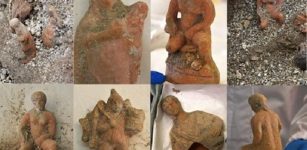 13 Ancient Terracotta Figurines Associated With Cybele And Attis Unearthed In Pompeii
Archaeology | Dec 28, 2023
13 Ancient Terracotta Figurines Associated With Cybele And Attis Unearthed In Pompeii
Archaeology | Dec 28, 2023 -
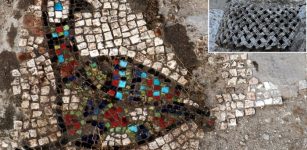 St. Simeon’s Monastery And History Of Its Founder Shed Light On Christian Past In Anatolia
Archaeology | Nov 28, 2020
St. Simeon’s Monastery And History Of Its Founder Shed Light On Christian Past In Anatolia
Archaeology | Nov 28, 2020 -
 Viking Sword Unearthed In Grave Excavated by Archaeologists In Central Norway
Archaeology | Aug 27, 2020
Viking Sword Unearthed In Grave Excavated by Archaeologists In Central Norway
Archaeology | Aug 27, 2020 -
 Mystery Of The Ancient Double-Headed Eagle Symbol
Ancient Symbols | Oct 11, 2017
Mystery Of The Ancient Double-Headed Eagle Symbol
Ancient Symbols | Oct 11, 2017 -
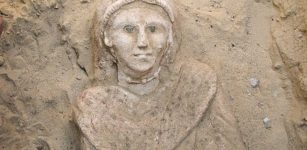 Curious Golden Figurine Of Female Dwarf Is A Puzzle
Archaeology | Feb 16, 2014
Curious Golden Figurine Of Female Dwarf Is A Puzzle
Archaeology | Feb 16, 2014 -
 On This Day In History: The Battle of Blore Heath – Sep 23, 1459
News | Sep 23, 2015
On This Day In History: The Battle of Blore Heath – Sep 23, 1459
News | Sep 23, 2015 -
 On This Day In History: Mary Queen Of Scots Born – On December 8, 1542
News | Dec 8, 2016
On This Day In History: Mary Queen Of Scots Born – On December 8, 1542
News | Dec 8, 2016 -
 Kingdom Of The Vandals: A People In Search Of A Home
Civilizations | Dec 14, 2018
Kingdom Of The Vandals: A People In Search Of A Home
Civilizations | Dec 14, 2018 -
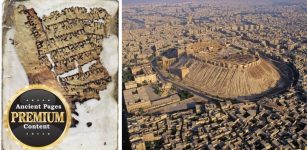 Unsolved Mystery Of The Aleppo Codex And Its Missing Pages: One Of The World’s Most Precious Ancient Books
Ancient Mysteries | Feb 27, 2017
Unsolved Mystery Of The Aleppo Codex And Its Missing Pages: One Of The World’s Most Precious Ancient Books
Ancient Mysteries | Feb 27, 2017 -
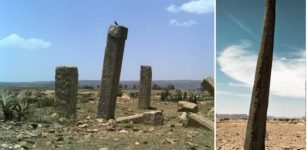 1,000-Year-Old Church Walls Unearthed In Ethiopia By Polish Archaeologists
Archaeology | Apr 26, 2020
1,000-Year-Old Church Walls Unearthed In Ethiopia By Polish Archaeologists
Archaeology | Apr 26, 2020 -
 Ancient Necropolis With Lead Coffins Sheds Light On Early Christian Funeral Practices
Archaeology | Jul 13, 2020
Ancient Necropolis With Lead Coffins Sheds Light On Early Christian Funeral Practices
Archaeology | Jul 13, 2020 -
 How Did 20th-Century Philosophers Explain Ghosts And Other Spooky Subjects?
Featured Stories | Nov 8, 2024
How Did 20th-Century Philosophers Explain Ghosts And Other Spooky Subjects?
Featured Stories | Nov 8, 2024 -
 Owain Glyndwr: Famous Medieval Welsh Warrior Prince And Symbol Of Independence
Featured Stories | Jun 20, 2018
Owain Glyndwr: Famous Medieval Welsh Warrior Prince And Symbol Of Independence
Featured Stories | Jun 20, 2018

